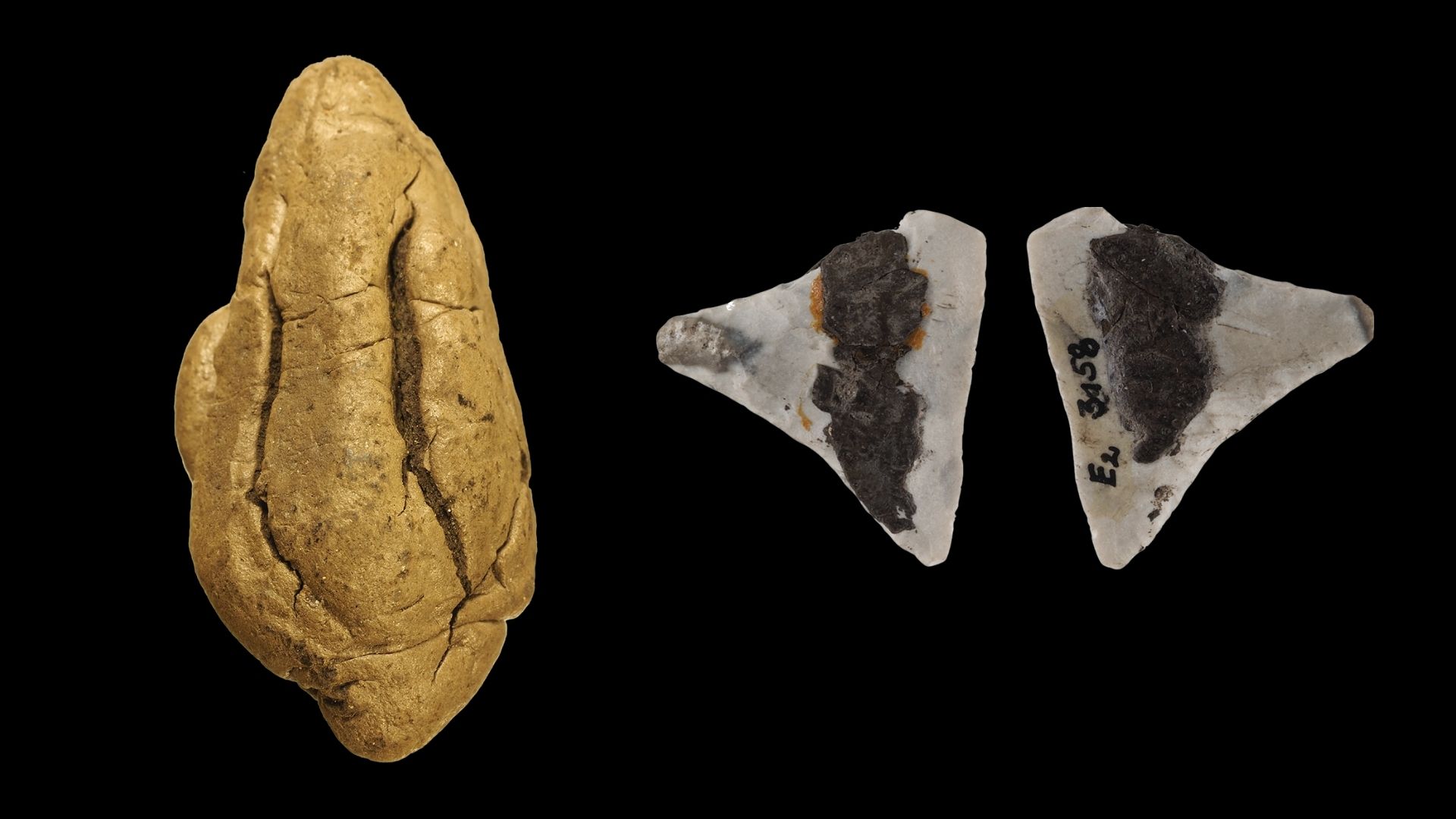Science
Ancient Chewing Gum Reveals Gender Roles in Neolithic Europe

A recent study by researchers from the University of Copenhagen has uncovered insights into gender roles in Neolithic Europe through the analysis of ancient chewing gum, or birch tar, dating back over 6,000 years. The study reveals that men and women likely had distinct responsibilities in daily life during this period, as indicated by the DNA extracted from the tar artifacts.
The research team examined 30 birch tar artifacts collected from nine archaeological sites in the European Alps, primarily retrieved from ancient lake settlements. Among these artifacts, twelve pieces were identified as loose wads, showing clear signs of chewing. Birch tar is recognized as the oldest synthetic material in the world and was utilized by Neolithic communities for various purposes, including medicinal applications, tool-making, and pottery.
The researchers noted, “The precise reason for chewing tar remains unclear, but it has been suggested that it was chewed for medicinal purposes as it contains natural compounds with antimicrobial properties,” according to the study led by Anna White. The team was able to extract DNA from 19 samples, providing a unique glimpse into the daily tasks of individuals based on their gender.
Some of the analyzed pieces contained DNA from linseed (Linum usitatissimum) and poppy seeds (Papaver somniferum). The latter may have been consumed for nutritional value or for its psychoactive effects. The presence of human and microbial DNA in some samples indicated that the tar was chewed, possibly by multiple individuals. This finding allowed researchers to identify the sex of those who chewed the tar, shedding light on gender-specific practices of the time.
Insights from the Findings
The analysis revealed that male DNA was found in tar used as an adhesive for ten stone tools, while female DNA was present in tar associated with three pottery items. These findings led the researchers to conclude that men were responsible for tool production, while women primarily engaged in pottery crafting during the Neolithic Age.
Additionally, the study proposed that chewing the tar may have served a practical purpose, such as softening it for use. The researchers explained that although saliva reduces the adhesive properties of the tar, reheating could restore its effectiveness. “[This] may explain why we find less oral microbial DNA in the hafted samples and the ceramic tars than in some of the ‘chewed’ pieces,” they stated.
Due to the scarcity of human remains from this era, the study of ancient chewing gum provides invaluable insights into aspects of prehistory that might otherwise be lost to time. The research was published in the Proceedings of the Royal Society B, marking a significant contribution to our understanding of Neolithic gender roles and daily life.
-

 Science2 weeks ago
Science2 weeks agoIROS 2025 to Showcase Cutting-Edge Robotics Innovations in China
-

 Politics2 weeks ago
Politics2 weeks agoJudge Considers Dismissal of Chelsea Housing Case Citing AI Flaws
-

 World2 weeks ago
World2 weeks agoBravo Company Veterans Honored with Bronze Medals After 56 Years
-

 Lifestyle2 weeks ago
Lifestyle2 weeks agoStone Island’s Logo Worn by Extremists Sparks Brand Dilemma
-

 Health2 weeks ago
Health2 weeks agoStartup Liberate Bio Secures $31 Million for Next-Gen Therapies
-

 Top Stories2 weeks ago
Top Stories2 weeks agoIndonesia Suspends 27,000 Bank Accounts in Online Gambling Crackdown
-

 Sports2 weeks ago
Sports2 weeks agoMel Kiper Jr. Reveals Top 25 Prospects for 2026 NFL Draft
-

 Health2 weeks ago
Health2 weeks agoTop Hyaluronic Acid Serums for Radiant Skin in 2025
-

 World2 weeks ago
World2 weeks agoHoneywell Predicts Record Demand for Business Jets Over Next Decade
-

 Lifestyle2 weeks ago
Lifestyle2 weeks agoMary Morgan Jackson Crowned Little Miss National Peanut Festival 2025
-

 Sports2 weeks ago
Sports2 weeks agoYamamoto’s Mastery Leads Dodgers to 5-1 Victory in NLCS Game 2
-

 Politics2 weeks ago
Politics2 weeks agoNew Jersey Voters Urged to Register Ahead of November Election









